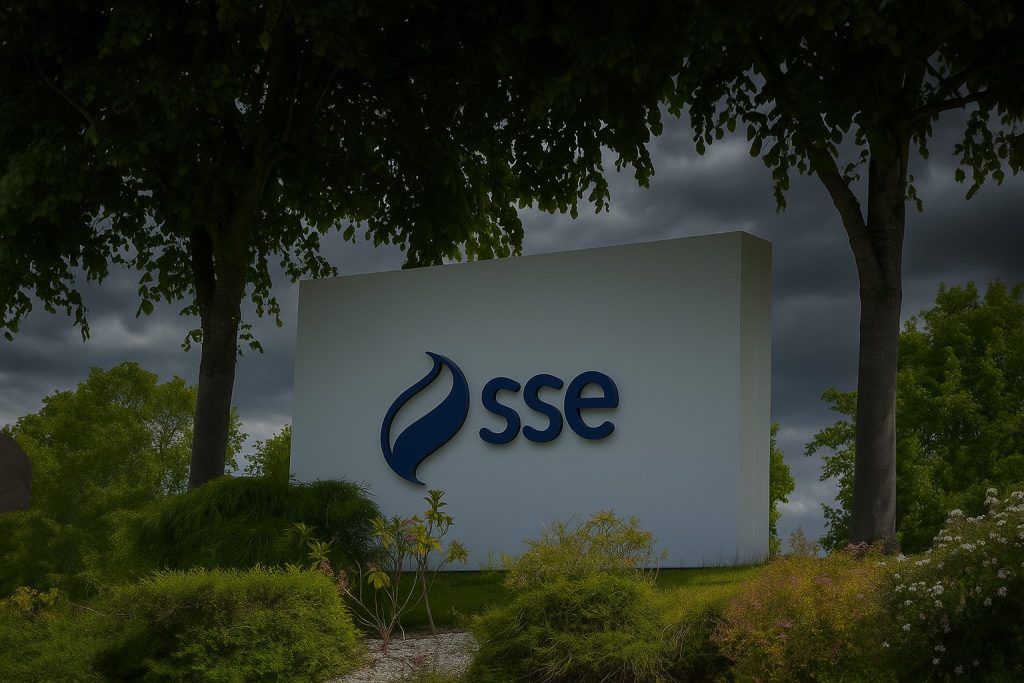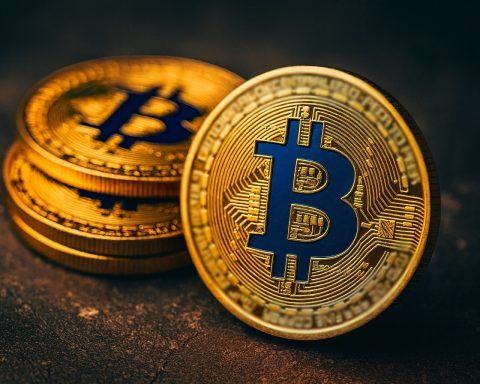This article is for informational purposes only and does not constitute investment advice.
On Monday, November 17, 2025, Coinbase is stepping into one of its most important weeks of the year.
The U.S. crypto exchange is switching on its new regulated token-sale platform with the highly anticipated Monad (MON) token as the debut offering, just as Bitcoin slides into a sharp correction and the company pushes ahead with a headline‑grabbing move to reincorporate in Texas.
Layered on top are fresh regulatory headaches in Europe, a growing web of institutional partnerships, and a public debate about which crypto assets really deserve to be “core” holdings in professional portfolios.
Here’s how Coinbase’s big day fits into the wider picture.
Monad token sale: Coinbase’s first U.S. public token sale since 2018
Coinbase’s new token sales platform officially goes live today with the public sale of MON, the native token of high‑performance Layer‑1 blockchain Monad. [1]
According to Coinbase’s own disclosure documents, the MON sale window runs: [2]
- Opens: Monday, November 17, 2025, 9:00 a.m. Eastern
- Closes: Saturday, November 22, 2025, 9:00 p.m. Eastern
- Tokens available: up to 7.5 billion MON, equal to 7.5% of initial total supply
- Sale price: $0.025 per MON
- Implied fully diluted valuation (FDV): $2.5 billion
If the entire allocation sells, Monad could raise up to roughly $187.5 million, making it one of the largest public token sales hosted by a major Western exchange in years.
Specialist coverage notes that this is the first major U.S.-regulated public token sale since the 2018 ICO boom, a symbolic return of compliant “crowd sales” to American retail investors. [3]
Monad itself positions as a high‑throughput, EVM‑compatible Layer 1 aimed at executing Ethereum‑style smart contracts faster and more cheaply, with public mainnet scheduled to launch on November 24, 2025, shortly after the sale ends. [4]
How Coinbase’s new token‑sale model works
Coinbase has made a point of distancing its platform from the free‑for‑all ICO era.
In a detailed product blog, the company describes the token‑sale system as an “end‑to‑end token sales platform”designed to give projects broad distribution while avoiding whale‑dominated launches and opaque pricing. [5]
Key design choices include:
- Request window, not a sprint: Instead of “fastest finger first,” users submit purchase requests at any time during a fixed window (in Monad’s case, seven days). When the window closes, Coinbase’s allocation algorithm decides who gets how much.
- “Fill from the bottom”: Smaller purchase requests are prioritized so that more small buyers are fully filled before larger allocations are topped up. This is meant to curb extreme concentration in a handful of big accounts. [6]
- Loyalty over flipping: Users who immediately sell tokens once they list may receive lower priority in future token sales, nudging allocation toward longer‑term participants rather than pure launch‑day flippers. [7]
- No user fees: Coinbase charges issuers a fee on the USDC they raise, but says it does not charge listing fees or user participation fees for the sales themselves. [8]
Perhaps the most significant change: for the first time since 2018, U.S. retail traders will be able to widely participate in a public token sale on Coinbase, subject to local eligibility and KYC checks. [9]
Coinbase plans to host around one token sale per month, signaling that MON is not a one‑off experiment but the start of a recurring pipeline for projects seeking a highly regulated launchpad. [10]
Market backdrop: Bitcoin’s slide puts pressure on COIN stock
The timing of this launch is dramatic.
Bitcoin has dropped from its October record above $126,000 to around the mid‑$90,000 range, with intraday lows near $95,000, triggering over $600 million in liquidations across the crypto market. [11]
Analysts describe the move as a transition into a “bear market regime” after months of exuberance, with traders repricing the odds of near‑term Federal Reserve rate cuts and risk assets wobbling in tandem. [12]
Research notes out today flag Coinbase among the crypto‑linked stocks likely to face short‑term pressure as Bitcoin and major altcoins continue their downtrend, grouping COIN alongside Robinhood (HOOD) and MicroStrategy (MSTR) as proxies for crypto risk. [13]
As of Monday morning, Coinbase shares are trading around the mid‑$280s on Nasdaq, roughly flat to slightly higher versus Friday’s close, after a volatile two‑week stretch that saw the stock swing between the high $260s and low $320s. [14]
For investors, this makes the MON sale a real‑time case study: can a new revenue line from compliant primary token offerings offset the cyclical drag of a crypto drawdown?
Coinbase’s legal home shifts south: from Delaware to Texas
While the token‑sale platform goes live, Coinbase is also in the middle of a structural legal shift.
Last week, the company confirmed that shareholders had approved a plan to leave Delaware and reincorporate in Texas, moving the exchange’s legal “home” but not its operational headquarters. [15]
In an op‑ed republished on Coinbase’s own blog, Chief Legal Officer Paul Grewal wrote that Delaware’s once‑predictable corporate law environment has become less attractive, and that Texas now offers a more “attractive hub for innovative companies” and a business court system designed for faster, clearer corporate rulings. [16]
Reuters and other outlets have framed Coinbase’s move as part of a broader “Dexit” trend — billion‑dollar firms that are increasingly choosing Texas or Nevada over Delaware for incorporation after a series of headline‑making court rulings, including the decision that voided Elon Musk’s $56 billion Tesla pay package. [17]
For Coinbase, the reincorporation underscores two themes that matter this week:
- Regulatory arbitrage is back on the table. By picking Texas, Coinbase is signaling that it will actively shop for legal frameworks it believes are friendlier to innovation and corporate governance.
- Symbolism matters. Even if the economic impact of changing legal domicile is modest, the optics of the largest U.S. crypto exchange abandoning Delaware give Texas a powerful marketing win in its bid to be a crypto and fintech hub.
Compliance squeeze: Irish AML fine and investigative scrutiny
Regulators, however, are not easing off.
On November 6, the Central Bank of Ireland fined Coinbase Europe Limited just over €21.46 million for failing to adequately monitor transactions for money‑laundering and terrorist‑financing risks between 2021 and 2025. [18]
The regulator cited shortcomings in Coinbase Europe’s transaction‑monitoring framework, including the way it calibrated risk scores and handled alert backlogs, and framed the case as a warning shot to virtual asset service providers operating in the EU’s tightening regulatory environment.
Separately, a sweeping investigation by the International Consortium of Investigative Journalists (ICIJ) into crypto exchanges’ role in global money‑laundering highlighted the strain that compliance teams face at large platforms. One former Coinbase employee is quoted describing alert volumes as “insane” and the ratio of cases to staff as “100% unbalanced,” arguing that compliance teams were overwhelmed by the workload. [19]
Coinbase did not respond to ICIJ’s questions, but taken together with the Irish fine, the stories feed a narrative that even exchanges operating in highly regulated jurisdictions struggle to match growth with the necessary investment in anti‑money‑laundering controls.
For the MON sale and subsequent token offerings, the implication is clear: regulators will be watching closely to see whether Coinbase’s new platform applies the same, or higher, standards than its spot and derivatives venues.
Institutional strategy: payments, staking and prediction markets
Alongside the retail‑facing token‑sale push, Coinbase is quietly expanding its institutional footprint.
Citi partnership on digital‑asset payments
In late October, Citigroup and Coinbase announced a collaboration to build digital‑asset payment capabilities for Citi’s institutional clients. [20]
The partnership will:
- Start by streamlining fiat pay‑ins and pay‑outs for clients using Coinbase’s on‑ and off‑ramp services.
- Explore using stablecoins to make cross‑border payments faster and potentially available 24/7.
- Aim to layer digital‑asset rails onto existing treasury workflows rather than replacing bank infrastructure outright. [21]
For Coinbase, winning a global bank like Citi as a partner is a strong signal that its custody, compliance and payments stack is considered robust enough for blue‑chip clients — something that matters when regulators are probing AML controls elsewhere in the group.
Staking with Figment and Prime
On the institutional investing side, Coinbase Prime has expanded its long‑running integration with staking specialist Figment, allowing large clients to stake a wider range of networks — including Solana, Cardano, and Sui — without moving assets out of Coinbase custody. [22]
Figment says the joint integration now covers more than $2 billion in staked assets, positioning Coinbase as a central hub for institutions chasing staking yield while outsourcing validator operations and governance complexity. [23]
Kalshi’s USDC prediction markets
The institutional theme continued last week, when event‑trading platform Kalshi confirmed that it had selected Coinbase Custody to safeguard the USDC reserves backing its prediction markets. [24]
Kalshi’s users deposit or receive USDC when trading event contracts; using Coinbase Custody plugs those flows into the same infrastructure used by ETFs, corporates and family offices, reinforcing Coinbase’s pitch that it is the default “back end” for serious, regulated crypto exposure.
How Coinbase Asset Management sees the market
If you want to understand how Coinbase is thinking about crypto portfolios in this environment, it helps to listen to its own asset‑management arm.
Today, Anthony Bassili, president of Coinbase Asset Management, told Crypto News Australia that institutional investors have a “very clear” consensus on Bitcoin and Ethereum as the core pair of any crypto allocation. Beyond those two, he said, agreement falls off sharply. [25]
Key points from his remarks:
- BTC and ETH are the starting point for most institutional mandates.
- Solana is “maybe” emerging as a third pillar, but there is a “big gap” between it and other contenders.
- Assets like XRP will need to prove higher on‑chain activity and deeper integration in global liquidity networks before joining the true “core” bucket. [26]
In other words, while Coinbase is launching a platform for early‑stage tokens like MON, its internal asset‑management view still treats the vast majority of crypto assets as speculative or peripheral compared with BTC and ETH.
That mindset may shape how aggressively Coinbase markets future token sales to wealth managers versus retail users.
Armstrong’s message: “Action produces information”
Against this busy backdrop, Coinbase CEO Brian Armstrong has been weighing in with something more philosophical.
In a short thread on X highlighted by Benzinga this morning, Armstrong described one of his favorite lessons from working with “smart” people: that taking action, even if imperfect, is often the fastest way to learn what actually works. [27]
He framed the challenge not as understanding the idea, but in making it part of everyday practice — a comment that resonates with Coinbase’s current situation, where it is simultaneously:
- Launching a risky but potentially lucrative token‑sale model in a skeptical regulatory environment.
- Overhauling its corporate legal home to a new state.
- Responding to enforcement actions and investigative reporting about compliance.
For employees, investors and users, the subtext is clear: Coinbase is choosing to move first and refine as it goes, rather than wait for perfect clarity.
What to watch this week
For Coinbase and the wider market, several milestones over the next few days will determine how November 17 is remembered:
- Monad sale demand
- How quickly does the request book fill?
- Does the sale hit the full 7.5 billion MON allocation, or does risk‑off sentiment cap demand?
- Secondary trading and volatility
- Once MON lists after the sale, its price action will be a litmus test of Coinbase’s allocation design — does broader distribution reduce extreme pump‑and‑dump dynamics, or not?
- Regulatory reaction
- U.S. regulators have allowed this sale to proceed, but they may still comment on the model, especially given the parallel Irish AML penalty and ongoing ICIJ scrutiny of exchange compliance. [28]
- COIN stock sensitivity to Bitcoin
- If Bitcoin continues to trade in the mid‑$90,000s or falls further, investors will be watching to see whether new business lines like token sales and institutional partnerships can soften the blow to Coinbase’s earnings expectations. [29]
- Texas reincorporation mechanics
- As paperwork with the SEC and Texas authorities progresses, corporate‑governance analysts will parse the fine print to see how shareholder rights, board protections and litigation risk change in the new jurisdiction. [30]
For now, Coinbase is doing what Armstrong advised: acting — launching a high‑profile token sale, changing its legal home, and pushing deeper into institutional deals — to generate information about what its next decade should look like.
Whether that strategy pays off will depend on how quickly it can turn today’s experiments into stable, compliant revenue streams in a crypto market that suddenly looks fragile again.
References
1. www.coinbase.com, 2. static-assets.coinbase.com, 3. financefeeds.com, 4. www.monad.xyz, 5. www.coinbase.com, 6. www.coinbase.com, 7. www.coinbase.com, 8. www.coinbase.com, 9. www.coinbase.com, 10. www.coinbase.com, 11. coinpaper.com, 12. finance.yahoo.com, 13. cryptorank.io, 14. www.investing.com, 15. www.reuters.com, 16. www.coinbase.com, 17. www.reuters.com, 18. www.centralbank.ie, 19. www.icij.org, 20. www.reuters.com, 21. www.citigroup.com, 22. www.businesswire.com, 23. figment.io, 24. www.coinbase.com, 25. cryptonews.com.au, 26. cryptonews.com.au, 27. www.benzinga.com, 28. www.centralbank.ie, 29. coinpaper.com, 30. www.coinbase.com










